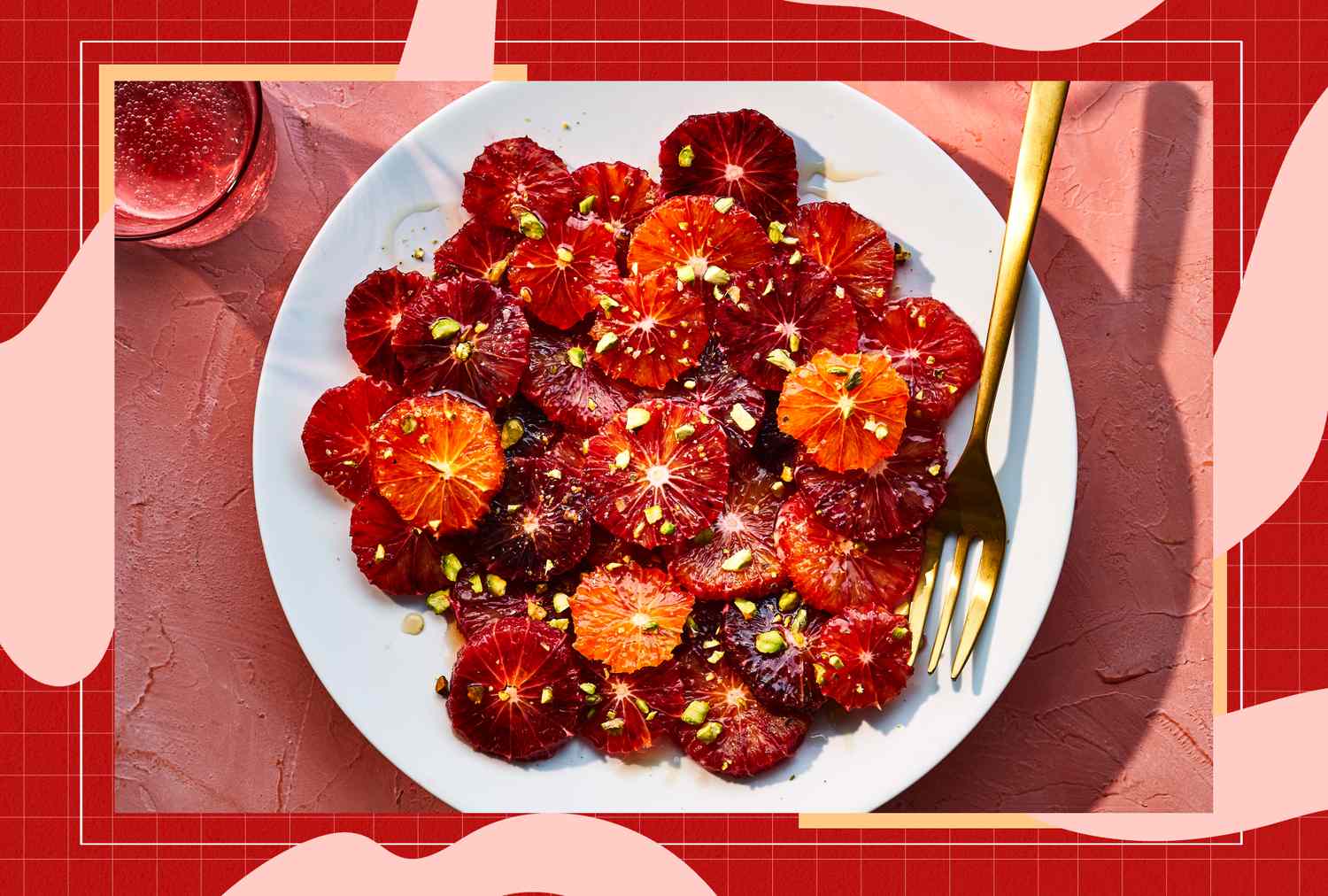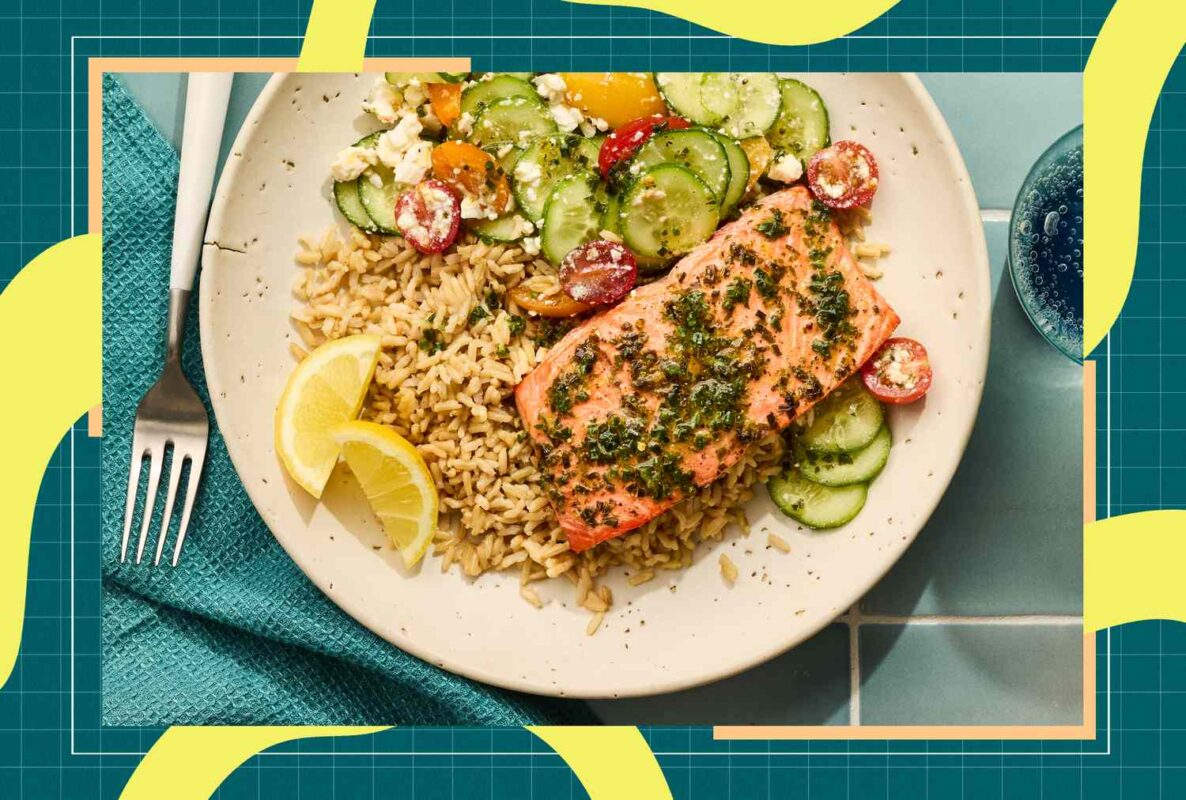Blog
The 5 Best Flavonol-Rich Foods, According to Dietitians

- Flavonols are plant compounds with antioxidant and anti-inflammatory properties.
- Top sources of flavonols include citrus fruits, onions, dark chocolate, apples, herbs and spices.
- Eat a variety of colorful fruits and vegetables for an anti-inflammatory diet.
You may know that the foods you eat contain macronutrients like carbs, fats and protein, as well as important vitamins and minerals. But you may not be as familiar with flavonols—plant compounds with antioxidant and anti-inflammatory properties that help your body defend against chronic disease. Flavonols belong to a larger family called flavonoids, which also includes compounds such as flavones, anthocyanins and catechins. “Flavonols are important for heart health, brain function, supporting memory, as well as reducing chronic inflammation, linked to diabetes, heart disease and arthritis,” notes Val Goldberg Libraty, RD, CD, a registered dietitian.
We dug into the research and spoke with registered dietitians to find out the top food sources of flavonols, why they’re so good for you and tips for eating an anti-inflammatory diet.
Citrus Fruits
Citrus doesn’t just bring bright, zesty flavor to foods and drinks—they’re also packed with nutrition. “Citrus fruits, such as oranges and grapefruits, are not only rich in vitamin C but also in flavonols, which are mainly found in the membranes and pulp, protecting against oxidative stress and supporting immune system function,” states Johane Filemon, RDN, a registered dietitian specializing in chronic inflammation and gut health.
Research has found the flavonols and flavones found in citrus fruits—such as luteolin and apigenin—act as antioxidants in your body, helping to reduce inflammation. These compounds are also known to offer antimicrobial and anticancer properties. To get more in your diet, reach for tangerines, oranges, grapefruits, lemons and limes.
Dark Chocolate
It’s a win-win when nutrition research supports a food most of us love. Frances Largeman-Roth, RDN, notes that “dark chocolate and cacao nibs are a fave. They are rich in epicatechins and procyanidins.”
Cacao—the plant behind chocolate—contains a mix of flavonoids, including quercetin and anthocyanins, along with an alkaloid known as theobromine. These compounds are linked to a reduced risk of certain chronic diseases, such as heart disease, type 2 diabetes, obesity, cognitive decline and certain types of cancer. “Research has linked dark chocolate consumption with improved endothelial function and lower blood pressure,” explains Largeman-Roth. Cacao also has some fiber and minerals, such as magnesium and potassium.
Dark chocolate contains a higher percentage of cocoa solids—often 70% or more—which helps deliver these health benefits. Cacao nibs, being minimally processed, retain the most nutritive value. Plus, both options are often lower in sugar than milk chocolate, making them a better choice when trying to get your chocolate fix.
Herbs and Spices
Herbs and spices add more than just flavor to your meals—they also support your health. Many flavonoid-rich herbs and spices may support heart and gut health and help stabilize blood sugar levels. Libraty recommends spices like cinnamon, turmeric and garlic for their antioxidant activity.
But don’t overlook herbs like parsley, often thought of as just a garnish. Filemon notes that parsley is “rich in kaempferol, as well as quercetin, two antioxidants known for their anti-inflammatory properties.” It also adds lots of freshness in recipes like tabbouleh and salad dressings.
Whichever herbs or spices you choose, you’re likely going to get some health-supporting benefits. Plus, they’re great for adding flavor when you’re trying to limit extra calories and sodium.
Apples
Apples are one of the most popular fruits for a reason—they’re full of nutrition and easy to access. Largeman-Roth remarks, “I also am a fan of apples thanks to their quercetin content, which helps protect our brains and provides cardiovascular benefits.”
If you want to stay strong as you age, you may want to reach for apples and other quercetin-rich foods. A recent study found that a high intake of quercetin was associated with a lower risk of frailty.
“Apples are also a source of soluble fiber, making them a top choice as a filling and nutritious snack,” says Largeman-Roth.
Onions
You’ve probably heard the advice to “eat the rainbow,” since the compounds that give fruits and vegetables their beautiful colors are often the same ones tied to health benefits. But this also includes lighter-colored vegetables, like the humble white or yellow onion, which are also rich in flavonols. “Onions are a kitchen staple in my home, not only for the flavor but also due to their high quercetin content, a flavonol that has been linked to reducing inflammation and cellular protection,” says Filemon.
Onions are packed with flavonoids known for their anti-inflammatory effects, and potential benefits for blood sugar and cholesterol management. They’re flavorful, affordable and versatile—just a few more reasons to love this everyday powerhouse.
Other Tips for an Anti-Inflammatory Diet
Eating foods that are rich in flavonols is important for reducing inflammation, but your overall dietary patterns and habits are key. A diet full of fruits, vegetables, whole grains, healthy fats, proteins, nuts, seeds and legumes delivers many powerful anti-inflammatory nutrients. It’s important to combine that with other healthy lifestyle habits, like physical activity, social connection and limiting stress. These tips can help too:
- Sip on coffee and green tea. What you eat is important, but so is what you drink. Coffee and tea are rich in antioxidants that may support brain health and concentration. Largeman-Roth says, “Green tea is one of the richest sources of catechins and has been linked to brain protection and cardiovascular benefits. Drinking a cup of green tea daily is a very smart health habit.”
- Go for color. The more colorful your meals, the better. Different fruits and vegetables offer a variety of flavonoids, which help reduce inflammation. “The more colorful your plate is, the more nutrients you are including,” explains Filemon.
- Decrease ultra-processed foods. If you’re looking to lower inflammation, reducing ultra-processed foods that are high in added sugar, sodium, saturated fats and refined grains is a smart place to start.
- Eat a variety of foods. While we’ve highlighted five top sources of flavonols, it’s important to remember that every food has its own unique nutrient profile. You’ll get different benefits from cherries than you would from kale or almonds—but it doesn’t necessarily make one better than the other. “Eating a variety of foods is important for getting as many inflammation-fighting foods in your diet as possible,” points out Largeman-Roth.
Our Expert Take
Flavonols are plant compounds linked to reduced inflammation and a lower risk of chronic disease. Foods that are rich in flavonols—like onions, apples, citrus, chocolate, herbs and spices—also provide other nutrients that are important for overall health. You don’t need to overthink it when it comes to flavonols. Just aim for a variety of different colorful fruits and vegetables and occasionally challenge yourself to try something new.
“The first step in any wellness journey is starting with the basics,” says Filemon. “Making your plate around fiber-rich, colorful produce and healthy fats is an easy change to make to reduce inflammation and promote good gut health.”












